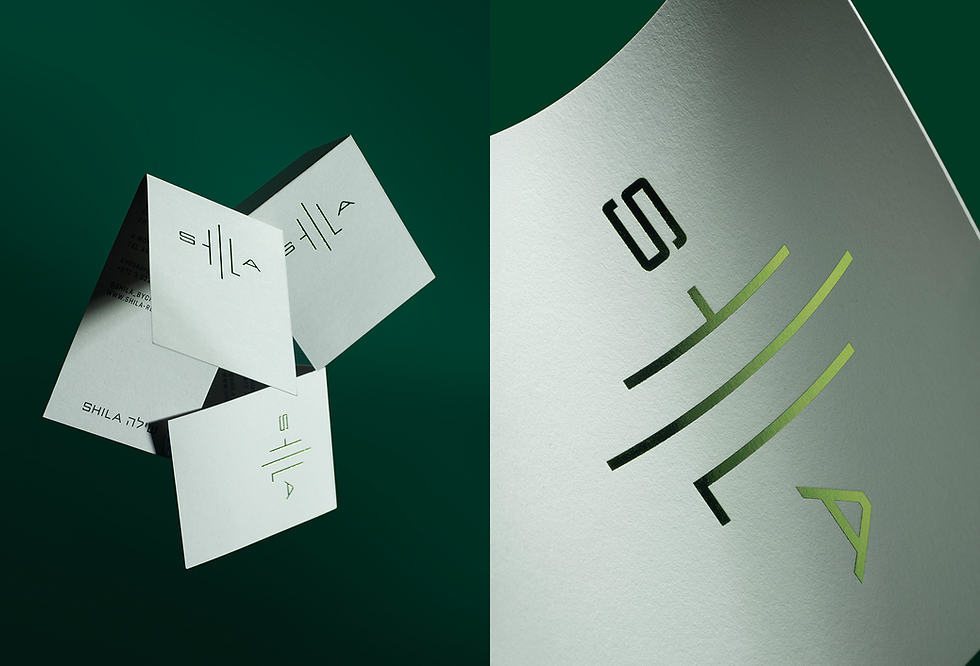- Dec 20, 2018
- 4 min read
Updated: Apr 16, 2024
Graphic design has always been about the fusion of type and image. This age-old relationship is currently taking on new forms, as typography is growing in size, becoming bolder and more dominant than ever. Type is even pushing images (and videos) aside, positioning itself as the new prominent feature in many compositions. And with this bright of a spotlight pointing in its direction, typography is clearly enjoying the attention. Type is beginning to explore more creative, experimental, and anti-hierarchical directions this year – and here are the main ones to watch out for:
1. Variable fonts
A variable font is a single font that acts as multiple fonts. Using dynamic attributes such as width, weight, serif and others, variable fonts can be modified live. This new style of font file, initially introduced in 2016 as a joint effort developed by Apple, Google, Microsoft and Adobe, allows for complete control and modularity in letter shape. Variable font files contain only two extreme states per attribute (thinnest to thickest, for example), from which an abundance of intermediate weights can arise – going way beyond your average thin, medium, bold and black. The resulting file is therefore both light in weight, which reduces on-page loading time, and responsive, making it more in tune with our changing needs and digital devices.
It’s hardly an overstatement to claim that the variable font might revolutionize the way we design and use type, and it seems like we’re only beginning to tap into the possible implications that follow. By allowing type itself to become responsive, variable fonts open the door to many possibilities at the intersection of typography and UX design. Text can now respond to our devices and physical environments, adapting in scale, width and more, so that it maintains optimal legibility in all reading conditions. Other possible implications, such as better accessibility in type design, will all be further explored in 2019.
2. Kinetic typography
Typography in 2019 is beginning to break free of its grid, page and screen. As a classic pillar of graphic design, type is traditionally considered to be a static element, and letterforms are its unfluctuating building blocks. Yet type today is moving towards a more experimental interpretation of space and form. Inspired by augmented reality, type is turning into a 3D object that interacts with its surrounding environment. With apps such as Weird Type that inject typography into our everyday surroundings, and the works of AR artists such as Andrew Johnson, letters are finding their way into spatial and animated mediums. They are now free to bend, swirl, tilt and whirl, making for distorted letterforms – and an immersive experience of interacting with type.
An experimental usages of type in augmented reality by Andrew Johnson.
3. Repeat repeat repeat
Repetition of text is another way in which type is gearing towards a more enveloping graphic experience. If kinetic type allows for letters to move around freely in a three dimensional space, this trend is a 2D interpretation of the same concept. We’re seeing design compositions filled to the brim repeatedly with the same word or phrase. This strong visual statement requires for very little help from other visual anchors, allowing for typography to take the lead. This style can be linked back to Kanye West’s The Life of Pablo 2016 album art (designed by Peter De Potter), and is only gaining more relevance in 2019.


4. Outlined type
Since type is growing bigger and more prominent in design, becoming a dramatic visual statement, designers are free to experiment with these newly gigantic letterforms. One such method that we’ve been spotting a lot of, is the use of outlined text. This trend creates a visual interference or variation by mixing together regular text with its hollow counterpart.
Cuchillo studio’s website.
The Disaster Artist movie website.
5. Font pairings
Another method of diversifying chunks of large text is by singling out select words with a different font or style. This practice is a simplified version of a previous trend. If until recently we were combining very different fonts and letter sizes into one happy cluster, we’re currently shifting towards a more harmonious overall look with just the slightest touch of disorder. In 2019, sentences or whole paragraphs will be more unified in size and composition, with just a few words here and there that inject a surprising change in style.
6. Edged typography
Since our use of typography is heading towards the experimental, it’s no wonder that font design, too, is embracing the deformative look. Many typefaces now include slight errors or distortions, undermining classical typographic principles. Seemingly cut-off or edged, these fonts perform a delicate balancing act of unique and imperfect forms, while maintaining legibility.
7. Humanist fonts
While the above-mentioned trends involve mostly geometric and clean typefaces that give off a very modern feel, we’re also seeing a different trend that calls for warmer, cozier fonts. Last year was marked by a boom of elaborate and ornate serifs, but those are now making way for a more refined version of the same style. The current wave of humanist typefaces welcomes both serif and sans-serif fonts. What they all have in common is that they are derived from traditional calligraphy, opting for organic shapes and a handmade, personal touch.
Heer‘s website.










